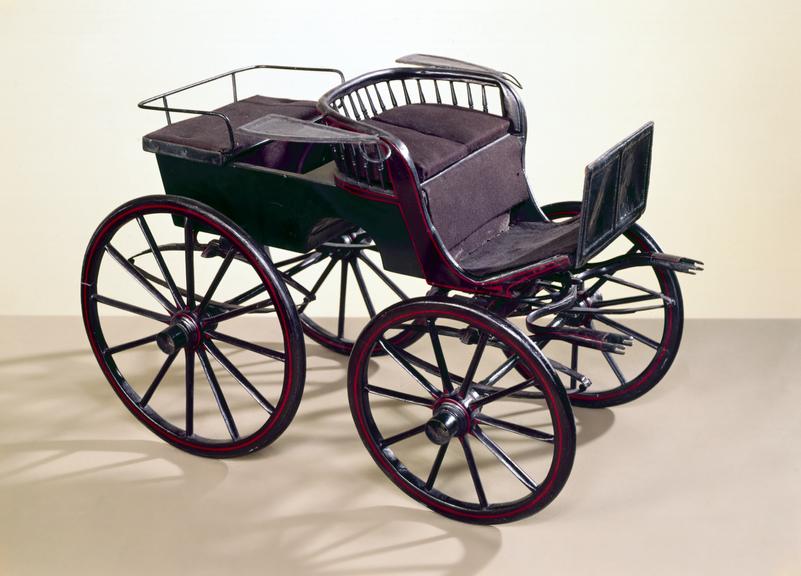Model of phaeton
Model of phaeton

Stanhope phaeton of 1865, scale model
The name Phaeton was given to a whole range of carriages from the late eighteenth century onwards. Essentially they were of the open type, having four wheels, and were suited to those owners who desired to drive themselves.
Originally, phaetons were constructed with perches and were drawn by a pair pf horses. Such carriages were used for a variety of purposes, frequently as posting carriages when long journeys were undertaken.
In later years successively lighter forms, requiring only single horses, were made. The example shown is of this type and is essentially a Stanhope Gig extended to the rear to provide a seat for a groom, and mounted on four wheels. For lightness, the carriage was built without a head, and in this form went under the name of "T-Cart". For some years this carriage was in popular use by young men of fashion.
This model was made by the donor's grand-father, Charles Joseph Wiggins, and was exhibited at the Crystal Palace in 1866.
Model of phaeton